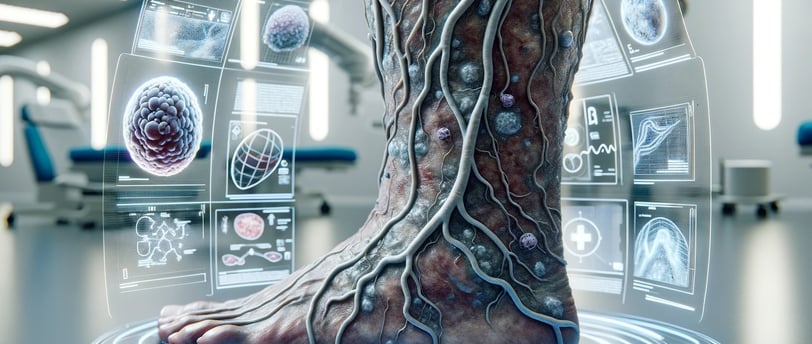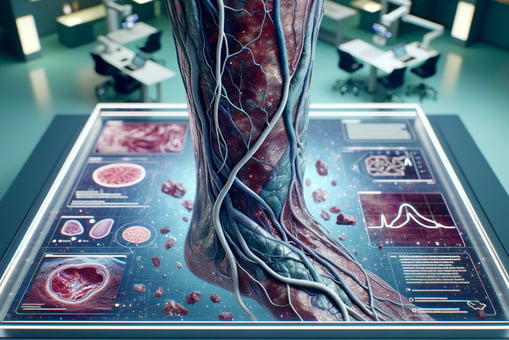Varicose Veins
Unraveling the Tangled Truth About Our Veins
HEALTH


Picture this: You’re walking down the street, feeling the sun on your face, enjoying the hustle and bustle around you. Suddenly, you catch a glimpse of your reflection and notice... your legs. They're not the smooth, sleek limbs you remember. Instead, they're adorned with varicose veins, those unsightly, twisted blue lines that seem to have a life of their own. Welcome to the world of chronic venous insufficiency, a condition that doesn't discriminate, affecting both the young and old, men and women alike. But fear not! There's more to this story than meets the eye (or the leg).
The Root of the Problem:
Varicose veins, or varices as they are medically known, are more than just a cosmetic issue. They're the visible signs of an underlying problem where veins struggle to efficiently return blood to the heart. The common culprits? A history of deep vein thrombosis, genetic factors, and weak leg muscles, especially in the calves. Diet also plays a crucial role, but we’ll get to that.
The Stages of Varicose Veins:
Like a villain in a horror movie, varicose veins don't appear overnight. They follow a gradual, sinister progression. In the first stage, you won’t see much – just some congestion and subcutaneous edema hiding beneath the skin. Stage two is when things get real – swollen legs and initial skin alterations make their debut. By stage three, if left unchecked, you're looking at full-blown varicose veins and, even worse, ulcers that are a nightmare to heal.
A Global Epidemic:
Varicose veins are playing a starring role in a global health epidemic, affecting a significant portion of the adult population. The statistics are staggering: 40-60% of women and 30-50% of men are part of this not-so-exclusive club.
The Quest for Solutions:
When it comes to treatment, options range from compression therapy and medications to surgery. But the jury is still out on their effectiveness. It’s like trying to fix a leaky faucet with a band-aid. The real deal-breakers in this saga are exercise and nutrition.
The Red Vine Rescue:
Enter the hero of our story – the extract of red vine leaves. This natural wonder, rich in quercetin, camperol, and other beneficial compounds, is showing promise as a game-changer in the fight against varicose veins. A systematic review of over 30 studies indicates that red vine leaf extract not only reduces the risk of developing varicose veins but also helps those already suffering from them.
The Science Speaks:
In a 2020 review, researchers analyzed the cream of the crop – the top five studies done in the most scientifically sound manner. The verdict? Red vine leaf extract effectively reduces the circumference of the calf and ankle in varicose vein sufferers. It also lessens leg heaviness, tingling sensations, and even improves peripheral cutaneous microcirculation. In short, it's like giving your veins a much-needed spa day.
Dosage and Tolerance:
Wondering how to jump on the red vine bandwagon? Participants in these studies took between 360 and 720 mg per day for about three months. The best part? A whopping 91% reported no side effects and tolerated the supplementation well. It’s like finding a rare gem in the world of supplements – effective and easy on the body.
Varicose veins are often the culmination of years of poor choices, but it’s never too late to turn the tide. A shift in diet from pro-inflammatory to anti-inflammatory, coupled with specific exercises (as I mentioned in other videos), can set you on the right path. Adding red vine leaf extract to your regimen could be the secret weapon you need to rejuvenate your veins and restore the vitality of your legs. So, next time you look down at your legs, don't despair at the sight of those varicose veins. Instead, remember that with the right knowledge, lifestyle changes, and perhaps a little help from our friend, the red vine, those veins can become a thing of the past. Here's to healthier, happier legs and a journey back to confidence and comfort!



